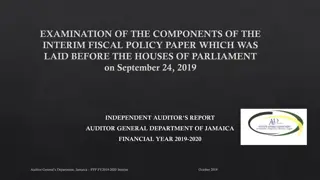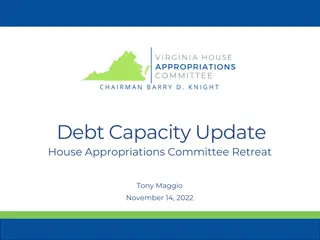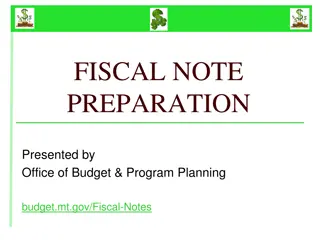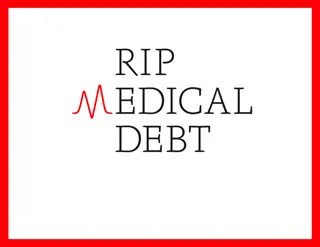Principles of Fiscal Deficits and Debt Management According to Kalecki
Economist Kalecki advocated for a permanent regime of fiscal deficits to manage public debt, emphasizing the importance of debt management for liquidity in the financial system. His principles involve splitting the government budget into functional and financial parts, each influencing aggregate demand and liquidity of capitalists. By utilizing domestic and foreign financing, Kalecki's fiscal policy aims to balance deficits and surpluses while considering dynamic implications such as the fiscal multiplier and macroeconomic outcomes. Towards comprehensive public finance reporting, debt management plays a crucial role in monetary policy.
Download Presentation

Please find below an Image/Link to download the presentation.
The content on the website is provided AS IS for your information and personal use only. It may not be sold, licensed, or shared on other websites without obtaining consent from the author.If you encounter any issues during the download, it is possible that the publisher has removed the file from their server.
You are allowed to download the files provided on this website for personal or commercial use, subject to the condition that they are used lawfully. All files are the property of their respective owners.
The content on the website is provided AS IS for your information and personal use only. It may not be sold, licensed, or shared on other websites without obtaining consent from the author.
E N D
Presentation Transcript
KALECKI, FISCAL DEFICITS KALECKI, FISCAL DEFICITS AND DEBT MANAGEMENT AND DEBT MANAGEMENT Jan Toporowski SOAS University of London
Introduction Introduction Kalecki argued for a permanent regime of fiscal deficit. The resulting public debt had to be managed, to ensure adequate liquidity in the financial system. He indicated how this should be done using fiscal as well as monetary policy. (Debt management as part of monetary policy.) The principles, derived from Kalecki s early work on national income and expenditure, have important relevance for fiscal dominance in a world of COVID.
1. Splitting the government budget into two parts: A functional budget consisting, on the expenditure side, of all government expenditure in the real economy (public services, welfare and transfer payments, subsidies); on the revenue side all taxes on incomes and expenditures in the real economy that would affect expenditure (aggregate demand) in the real economy. A financial budget consisting, on expenditure side, of servicing of government debt; on the revenue side taxes on property (wealth, inheritance and capital gains taxes) + taxes on profits with allowance for investment to maintain pre-tax profitability of any given investment.
Kaleckis principles of fiscal policy Functional budget influences aggregate demand (expenditure) in the economy; Financial budget influences liquidity of capitalists. Split budget gives 2 independent fiscal instruments: financial budget for debt management; functional budget for aggregate demand management. Domestic vs. Foreign Financing
Dynamic Implications: The Fiscal Multiplier Financial Balance Overall balance Functional Budget Balance Macroeconomic outcome (ex ante) Deficit Surplus Surplus or balance Expansionary fiscal contraction Surplus Deficit Deficit Contractionary fiscal expansion Deficit Deficit Large deficit Expansionary financial instability Surplus Surplus Surplus Deflationary financial instability
Towards comprehensive public finance Towards comprehensive public finance reporting... reporting... Government budget that sums overall to zero indicating: Financing of deficits in functional/financial/overall balances; Use of overall surplus (to expand government balance sheet by buying assets, or reducing government balance sheet by buying in debt, in either case making private sector wealth portfolios more liquid). The role of debt management in monetary policy.























